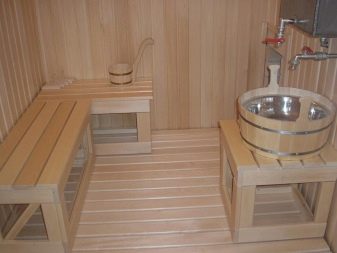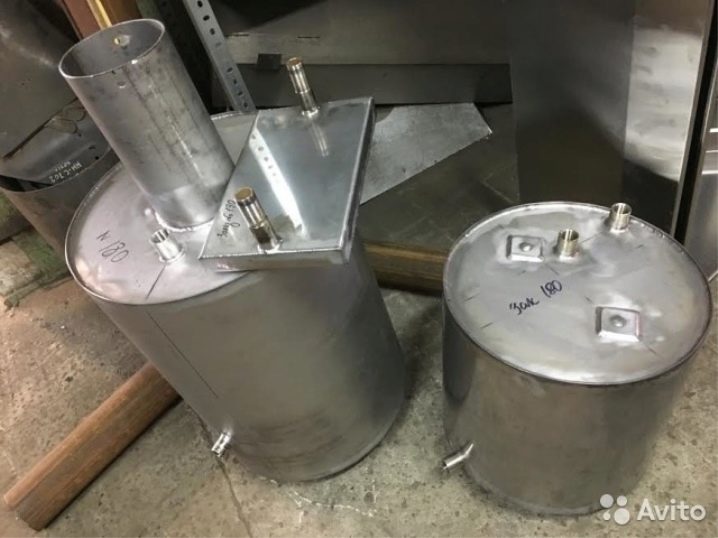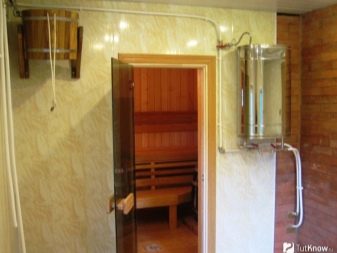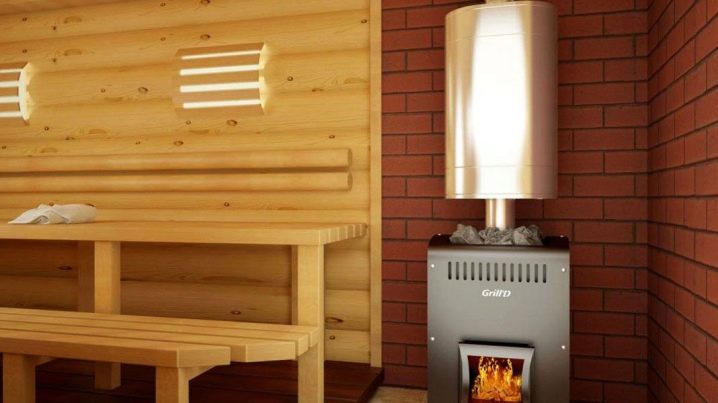Choosing a tank for hot water in the bath
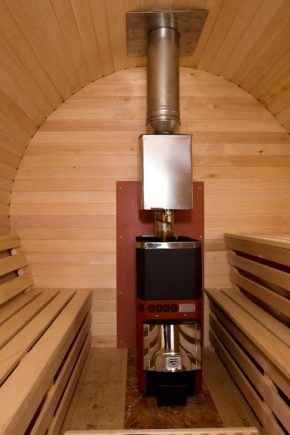
It is impossible to imagine a bath without water. And if the issue of the emergence of cold water is solved by summing up the centralized water supply, then getting a hot liquid is somewhat more complicated. To solve the problem of hot water allows the use of storage tanks.
Purpose
A water tank is a reservoir designed for organizing hot water supply. Regardless of the type and volume, it has an opening for the entry of cold water, as well as valves for hot.
Despite the variety of electric and gas heating devices, the water tank does not give up its positions. Its use saves energy and gas consumption.In addition, the tank remains the only device for heating water if there are interruptions in electricity or gas in cylinders has run out.
Hot water in the bath is mainly used for ablutions after the steam room. In addition, it is necessary for domestic needs, washing. Finally, hot water in the steam room serves as an additional way to heat the room, to get hot steam, so beneficial to health.
Types
There are the following main types of bath tanks.
Built
The water tank in this case is installed on the bottom of the furnace, and on top it is combined with the furnace. A feature of the tank is that its bottom is directly in contact with fire, thereby achieving a high rate of heating water and long-term preservation of temperature. The intake of hot liquid is made from the top of the tank or through the built-in valve.
Direct contact of the tank with fire imposes special requirements on its design. It should be heat-resistant, not subject to deformation, with thick walls. Its size is determined by the dimensions of the heater. The disadvantage is that the efficiency of the latter is reduced, since most of the heat goes to the heated tank.
Portable
The remote model is mounted outside the steam room - in the washroom, a waiting room. Such tanks are usually installed on a furnace with a heat exchanger and are connected to it through brass or copper pipes.
The principle of operation of the design is based on the fact that cold water falls down and enters the heat exchanger, while hot water, on the contrary, rises and enters the tank.
The advantage of the design is reliability and long-term preservation of high water temperature. The disadvantage is the heating of the tank walls, which can cause a burn.
On the tube
If hot water is needed throughout the day, then the tank tank will be optimal. Water heating, and it is sufficiently operational, is carried out at the expense of thermal energy. The temperature of the smoke in the chimney is about 500 degrees C, so the heating happens quickly.
The chimney design is characterized by overall dimensions and high heat capacity. Its use prevents the risk of leakage of carbon monoxide emitted during the operation of the furnace, since surrounding the pipe, the water tank becomes its protection.
The most common is the model of the samovar type, which is equipped with a single or double choke. May have different capacity and appearance.
Tanks on the pipe, in turn, can have the following types.
Reservoir built into the pipe
In this design, the chimney pipe is located inside the tank and is fixed, mounted in the organization of the chimney. The tank has the shape of a rectangle or cylinder. It is important that the lower entrance of the pipe had a high-quality sealing. Otherwise, do not avoid leaking tank. Water in this design by gravity flows directly into the washing or intermediate bowl.
Suspension
It is a type of removable structure on a chimney, so it can be mounted on an already mounted chimney. The tank is placed close to the pipe, fixing it securely. The presence on the rear wall of the tank gutter, repeating the shape and diameter of the chimney, will provide better fixation and tight junction of the tank to the pipe.
The disadvantage is the risk of burns when using this system. In addition, if the tank is small, the water in it begins to boil, which is unacceptable in the tank of any type. To prevent boiling allows periodic draining of hot and subsequent topping up in a container of cold water.It is more convenient to do this in the presence of a tap to drain hot water.
The tank on the pipe can be mounted at different heights. The simplest method is to install the container directly on the furnace. The advantage is simpler installation, no need to purchase special brackets, almost unlimited choice of tank volume. However, due to the low location of the device, it cannot be combined with a shower.
For small steam rooms, you can choose a hinged corner option, the use of which does not clutter the room. As a rule, such tanks have a horizontal arrangement. A horizontal tank is usually oval in shape, resembling a barrel.
Installation on a chimney column requires special mounts. The volume of the tank is limited, but this design makes it possible to supply hot water to the shower.
For large companies (that is, if you need a large amount of hot water) you should think about installing a tank in the attic. Ceilings will be a reliable basis for the capacity, so the choice of its volume is very wide.
The main thing is to take care of reliable thermal insulation of the attic, otherwise the heat loss will be enormous.
Attachment
Allocate also the added tank, which does not require wiring pipes. Externally, it is a "canister" with a faucet, which is simply attached to the wall of the furnace. Such a device was not widely used due to low efficiency. The water in the "canister" heats up slowly and unevenly: it is stronger in places of contact with the furnace.
If the stove is in the corner of the steam room, then one of its sides is the furnace part, the second remains free for the additional tank. It turns out that the place where the water leaves the tap is inconvenient. True, to correct the situation allows the use of the pump.
Such devices are equipped with a removable lid or neck with a diameter of at least 10 cm. The second option is more common. Despite the fact that the neck makes it difficult to clean the container, this design is more reliable.
Tanks are delivered in finished form, can have various forms and dimensions. The best option is a stainless steel tank. The available version is galvanized steel counterparts, which, however, have a shorter service life.
For a large area of baths, equipped with powerful furnaces, recommend an expansion tank.Its feature is the ability to compensate for excessive pressure in the heating system, which is always inevitable with increasing water temperature. In fact, it is a standard large-volume storage tank with the function of maintaining optimal water pressure.
Depending on the method of heating the tank, the following types of it are distinguished:
- heating from the stove;
- use of heating TENOV.
The choice of a particular option depends on the volume of the tank and the features of the bath procedures.
If the bath is designed for 1-3 people and, accordingly, the tank is of a small volume, you can use containers with heating heating elements. This will avoid the situation when the bath is already quite warm and comfortable, but the water is not yet heated, and therefore you have to spend the fuel and wait for the water to heat up.
For large companies, as well as lovers of long bath procedures usually recommend containers heated from the stove. While you bathe, she manages to warm up a large amount of water - just for 4-7 people or more (depending on the type of device).
Materials
Such characteristics of the tank as reliability and durability, speed of heating and cooling of water,largely due to the material manufacturing tank.
Among the most popular emit tanks from the following materials.
Stainless steel
The material is characterized by strength, resistance to mechanical stress and deformation, the action of high temperatures. Environmental friendliness and corrosion resistance are also advantages of stainless steel tanks.
The water in them heats up quickly, but due to the high thermal conductivity and cools faster. Such designs are made in the form of a cylinder or a rectangle.
The basis of this tank is sheet steel. If it is chrome or stainless material, it is characterized by low light absorption. Such a tank will reflect light, thereby increasing the degree of illumination of the steam room.
Cast iron
Cast iron products are notable for their increased durability and impressive (at least 40-50 years) service life. The material is characterized by low thermal conductivity, so the heated water remains hot for a long time.
Pig-iron tanks warm up a little slower than analogs made of stainless steel. However, they are able to keep the temperature of the water almost all day.The advantage is also the absence of deformation and rust.
From minuses - the big weight of a design and the difficulties of installation connected with it.
Other types of metal
Steel tanks are characterized by much lower performance compared with the options described above. They are prone to deformation, the appearance of corrosion, do not differ in durability. Even with proper maintenance of the tank, it is difficult to avoid the appearance of corrosion, which affects the purity of the water and the durability of the tank. To reduce the likelihood of its occurrence allows the drainage of the tank after use and wiping it dry.
Galvanized steel tanks have better corrosion resistance compared to metal, but they also quickly fail.
Enameled Tanks can also be used for baths, but you should not hope for their durability. A rather frequent problem is the chipping of the enamel, due to which the unprotected parts of the tank undergo corrosion. Such designs have a much lower cost. However, they cannot be painted with heat-resistant paints, since during the heating process, the release of toxins begins.In the presence of chips and cracks from the use of enameled metal tank is better to refuse.
An inexpensive version of a homemade tank would be a container welded from several sheets of aluminum. In the presence of galvanized sheets will be able to get a product that is protected from corrosion.
Plastic and wood
On sale today you can find plastic tanks that mimic wooden barrels. Naturally, they are not designed to heat water. Such bowls are used for cold water or mixing hot and cold water. In this case, do not forget that hot water is poured into cold water, and not vice versa.
A good option for storing cold water is an oak barrel that is environmentally friendly, durable and attractive in appearance.
Sizes and shapes: optimal volume
You can select the optimal tank volume based on the number of users. On average, one person requires 18-26 liters of water. About 10-12 liters is required for bath procedures, another 5-7 liters - for a shower or ablution after a bath. In addition, it is always necessary to make a reserve in case of unforeseen situations.
Knowing this, it is easy to calculate that for a family of 2 people a reservoir of 50-60 liters is enough. And for a company of 4-5 people - no less than a 100-liter tank.
On sale you can find many models of designs of different sizes, as a rule, it ranges from 20 to 200 liters. The range of volumes of electrical analogues is slightly less - from 30 to 100 liters.
When choosing a tank volume, remember that wall thickness depends on it. The larger the volume of fluid that the tank holds, the thicker the walls should be. For tanks of 50 liters, the optimum thickness is about 1 mm, for tanks with a volume of about 50 liters, the wall thickness is 1.5 mm. With increasing wall thickness increases, respectively, and the weight of the product.
The dimensions of the tank to the pipe depend not only on the needs of users in a certain volume of water, but also on the diameter of the pipe itself. To determine the required volume of the tank in this case, you can squared the radius of the base of the pipe, and then multiply by the constant mathematical constant number "pi" equal to 3.14. After that, the resulting number multiplied by the estimated height of the cylinder (or, if we are talking about installing the tank from the furnace to the ceiling, this distance).
The shape of the tank can be round, cylindrical or rectangular. When choosing a form, it is important to focus not only on your own aesthetic preferences, but also on the installation site of the tank.
If the tank is mounted in a furnace, preference should be given to round devices.The walls of such a tank can withstand pressure well, so it will be more durable.
Installation and connection
Schemes of installation and connection of the tank depend on its location, features of the bath.
If you are at the stage of building a bath, it is recommended to take care of improving the comfort of the building right now. To do this, separate the steam room and the washing area and install an outboard type tank in the last one. Water in this case is supplied under voltage, therefore, it is impossible to do without a closed water supply system.
The self-made system can be organized by means of an oven equipped with an internal coil and connected to the tank. Another option is to hang the bowl over the stove. For such a scheme, a simple tank of 50-120 liters is enough, which can be welded with your own hands, which will significantly reduce costs. For a small family, a standard 80-liter tank is sufficient, which is not difficult to purchase in a store.
If everything is installed and connected correctly, the water, being heated in the register, rises to the top. Gradually cooling down, it is again lowered into the register. In other words, the principle of natural circulation is realized.
Installation in this case is carried out in several stages:
- the tank is mounted under the ceiling and is connected by pipes with a coil;
- to ensure the proper circulation of water will allow the connection of the upper outlet of the tank with the upper outlet of the coil, the lower - with the lower (that is, after connecting the drain of hot water will be on top, cold - from below);
- At the point of entry of cold water supply should be installed the so-called "explosives" - a safety valve; here they also install a check valve;
- the maximum permissible pressure is set at which the safety valve is activated (the setting is made in accordance with the instructions of the heating tank).
It is important that the length of the contours be no more than 2.5 m. The advantage of the system is that when the water reaches the desired temperature, its movement through the pipes can be stopped.
If you install the tank directly on the stove, then lay an 8-10 mm asbestos sheet between them. So you will manage to prevent boiling water. But this method is only suitable for stoves, which heater is located on the side. The preferred shape of the water tank is rectangular.
How to install a water tank in the bath, see the following video.
Useful tips
- If you decide to install the tank in the furnace with your own hands, choose a device that is resistant to heat and temperature changes and wall thickness of at least 1 mm. The best option is a stainless steel bowl. The basis of this design can be food grade AISI 304 stainless steel, which is characterized by high cost. The use of AISI 430 grade allows to reduce the price by approximately one and a half times. The latter is not inferior in its technical properties to the food analog.
- Cast iron tanks above the heater must be securely fastened to the ceiling on a metal frame and hooks. When operating the remote tank, do not forget to drain the remaining water in the tank during the cold season. This will prevent the pipes from freezing.
- To increase the heating rate and ensure its uniformity in the tank on the pipe will allow its location from the furnace to the ceiling. This will ensure maximum use of the heating element and, accordingly, will accelerate the heating process.
- If necessary, heat large amounts of water (up to 200 liters or more) it is better to stop the choice on products with a heat exchanger. If you are mounting a large volume tank on a pipe, make sure that its weight falls on the supporting elements (walls) and not on the furnace and pipe.
- The tank itself can be made of enameled or stainless steel. The second option, of course, is preferable.
Please note that water heaters for pipes must be covered with factory heat-resistant enamel. Galvanized and painted analogues do not have the necessary indicators of heat resistance.
- It is important that the chimney column is characterized by good thermal conductivity, and therefore tanks are not installed on brick and asbestos pipes. A pipe made of metal, better than stainless steel, is the best option. However, the use of iron is better to refuse - it burns too fast. Ceramic chimney is considered the most durable, but not everyone can afford it due to its high cost.
- If you make a metal tank with your own hands, then its anti-corrosion treatment is obligatory. To do this, it should be painted from the inside and outside with special compounds. The latter are used only on a thoroughly cleaned and degreased surface.
- If the bath has several shower heads or a shower panel with hydromassage options and multiple water spraying modes, a pump must be installed.His task is to provide the necessary water pressure. It is important that its functioning was noiseless. Plastic pipes and fittings demonstrate this in the best way.
It is important that the plastic pipes used are heat resistant. When choosing metal pipes, there are enough ½ or ¼ inch steel products. The pump itself is located outside the bath, for example, in the utility room or sanitary hatch.
- When choosing the type of installation of the tank should take into account the area of the steam room, the heat efficiency of the furnace and the volume of the tank. If the stove is small, like the steam room itself, it is better not to reduce the performance of the first one and not clutter up the space of the second one, but take the tank out of the steam room.
- Disadvantages can occur with high efficiency stove, located in a small steam room. In this case, the water in the tank will quickly heat up, and then boil off. The atmosphere in the steam room will heat up and become uncomfortable. The room will be filled with excessively hot, humid air. Users are simply forced to open the door to the dressing room to let off steam. And this is a direct path to drafts and colds. In this case, it is better to choose a tank of small volume.If this is not possible, install the system with a heat exchanger and take the tank to the washing one.
- It is important that the capacity had a convenient water intake of hot water. When using a samovar or remote device, it is better that they have faucets. It is not safe to take water from above.
Best of all, if the tank for a bath is selected at the planning stage. In this case, it will be possible to implement a simple water supply system, to provide for steam extraction points, especially the arrangement of the bath.





